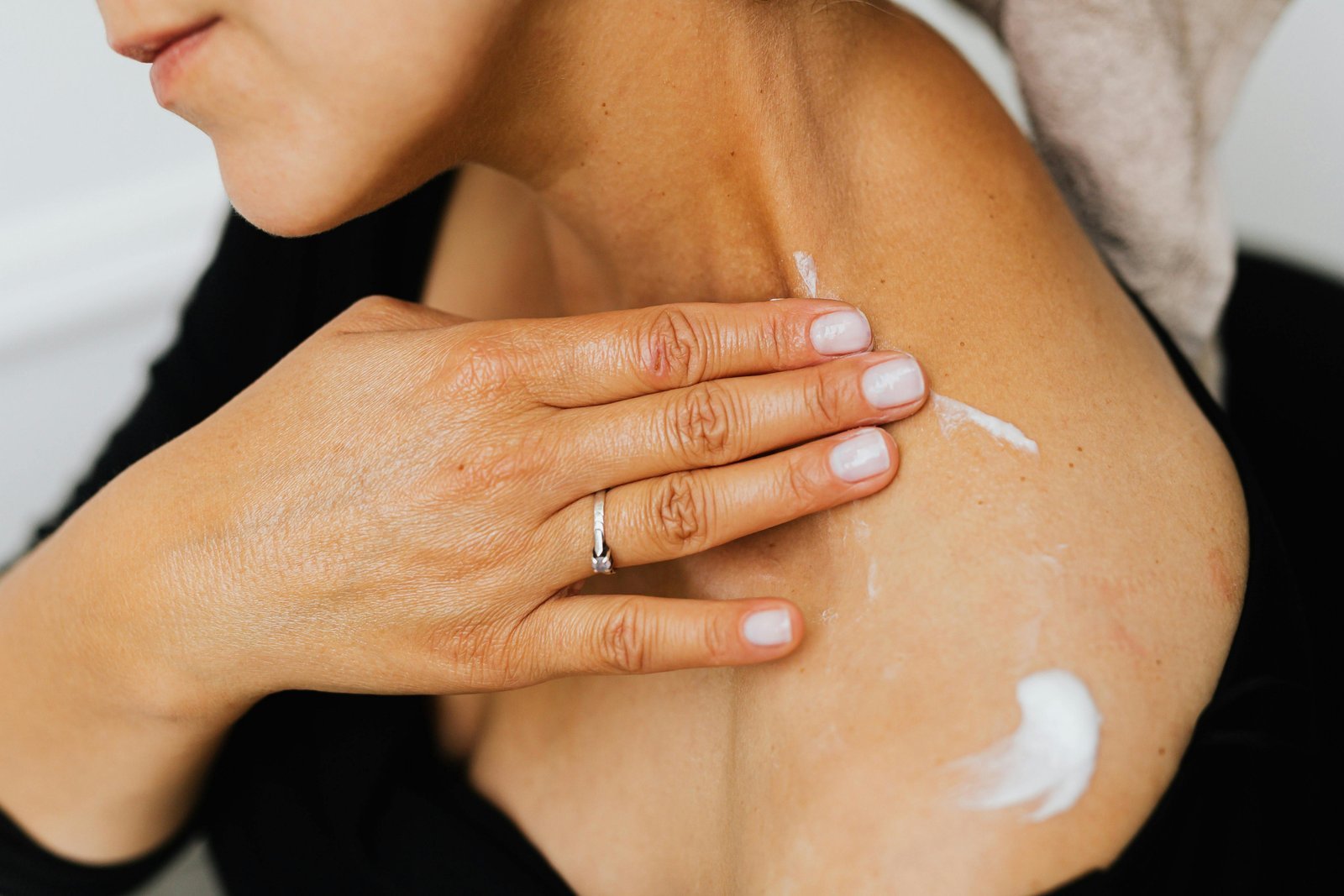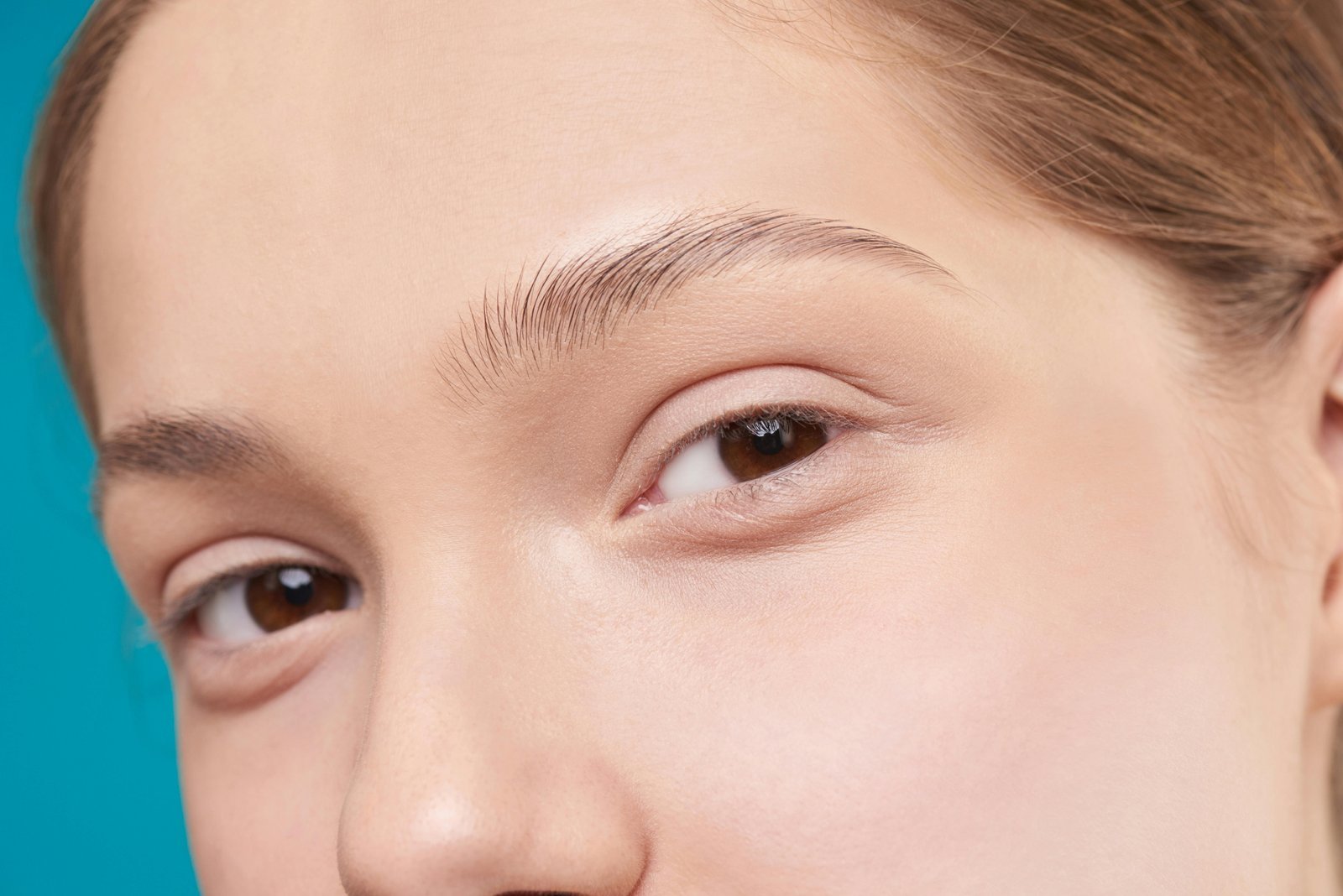Can You Use Numbing Cream Before a Tattoo Safely? A Pain-Free Guide for Getting Inked
Thinking about whether you can use numbing cream before getting a tattoo? You’re not alone—this is easily one of the most asked questions at any tattoo studio. The idea of skipping the sting and settling in for a more pain-free tattoo session sounds brilliant, right? But is using tattoo numbing cream actually safe? Will it numb your skin without messing with the ink? In this post, we’ll look at how to use tattoo numbing cream properly, when it’s a good idea, and when it’s not. Whether it’s your first tattoo or your fifteenth, knowing the facts can make your tattoo more comfortable—and safer.
Can You Use Numbing Cream Before a Tattoo?
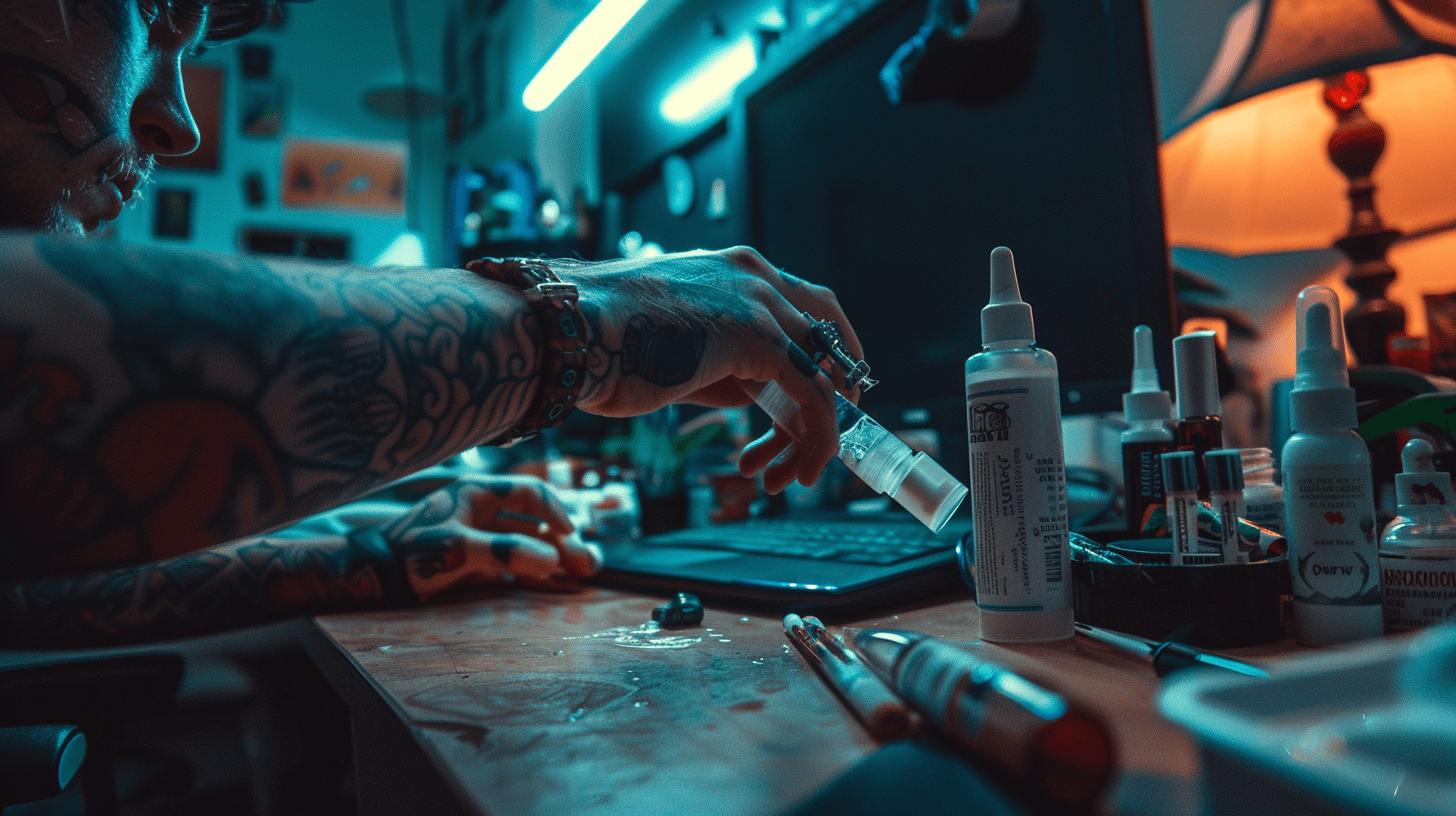
Yes, you can use numbing cream before a tattoo.
Tattoo numbing cream is considered safe when used correctly and can be a useful option to reduce the pain during a tattoo session, especially in sensitive areas or for longer sittings. Most creams contain lidocaine—a local anaesthetic that blocks nerve signals in the skin. When applied properly, it can make your tattoo experience more comfortable, especially if you’re nervous or have a low pain threshold.
Here are five situations where it makes sense to use numbing cream for tattoos:
- You’re getting a tattoo on a sensitive area like ribs, inner arms, or feet where pain is typically more intense.
- It’s your first time getting tattooed and you’re anxious about how much it might hurt.
- You’re planning a long session—numbing cream can help you sit still for hours of tattooing.
- You have sensitive skin or a lower pain tolerance and want to numb the area beforehand.
- You’re covering up an old tattoo or scar tissue, which can be more painful than fresh skin.
Not all tattoo artists are on board with using numbing cream. Some believe it can affect how the skin takes ink or how the stencil holds. Others are fine with it, as long as the cream is applied correctly and doesn’t interfere with the tattoo process.
Always ask your tattoo artist beforehand. If they’re happy for you to use tattoo numbing cream, make sure to follow their guidance on when and how to apply the cream for the best results.
How Tattoo Numbing Cream Works on the Skin
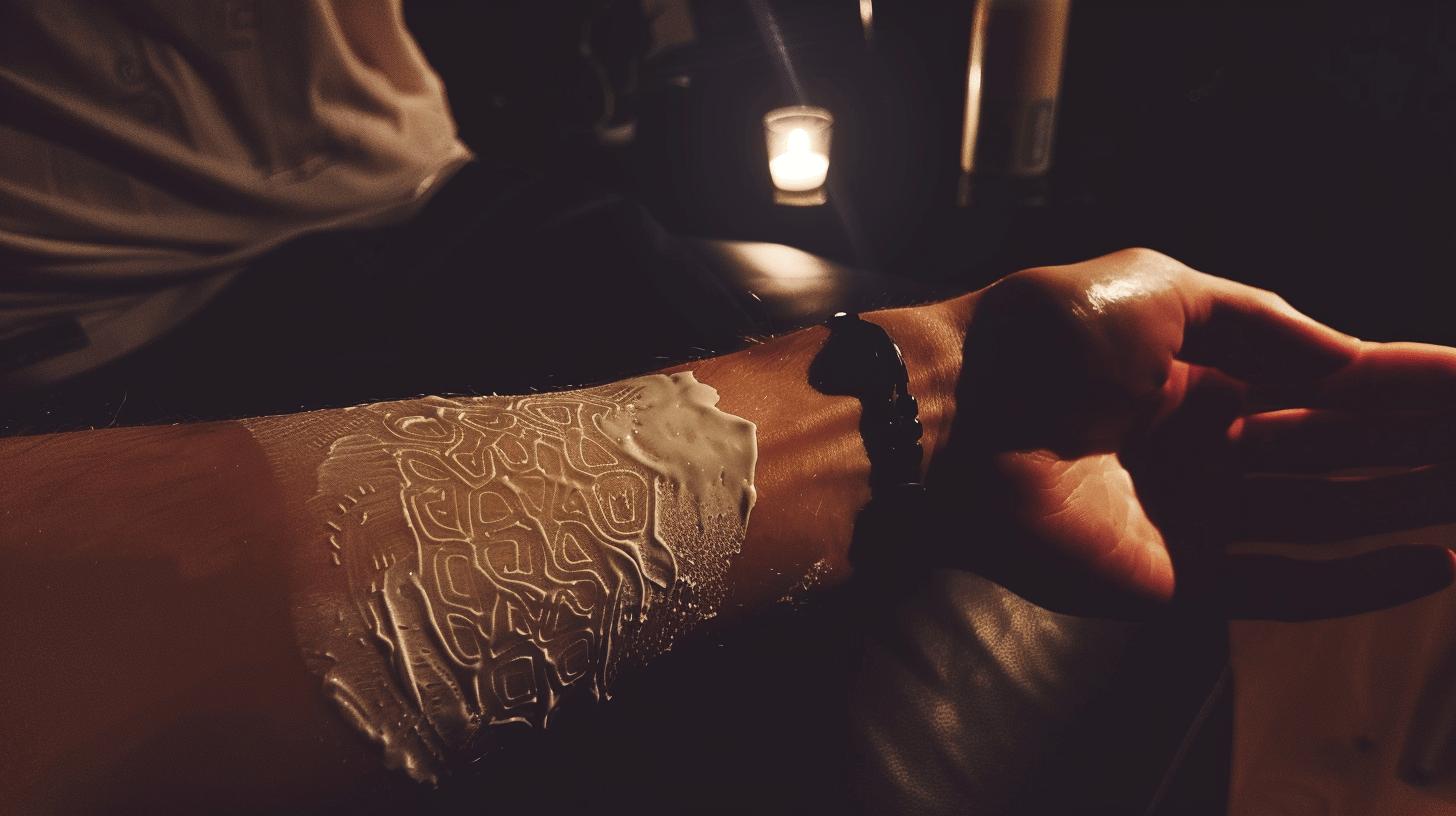
How does numbing cream work?
Numbing cream for tattoos works by using a local anaesthetic—usually lidocaine—to block nerve signals in the skin. When the cream is applied directly to the skin, the lidocaine temporarily stops the nerves from sending pain signals to the brain. This helps numb the area and reduce the pain during the tattoo process. These creams are classed as topical anaesthetics for tattoos and only act locally, meaning they affect the skin’s surface without entering the bloodstream in significant amounts.
The numbing effect doesn’t happen instantly. After applying a thick layer of cream to the area that will be tattooed, it takes around 20 to 30 minutes to start working. Peak numbness usually kicks in around 60 to 90 minutes after application, which is why you need to leave yourself enough time before your tattoo appointment. Most tattoo numbing cream products provide pain relief for 2 to 3 hours, but some claim to last as long as 5 hours depending on the brand, your skin type, and whether the cream is kept under plastic wrap to stop it drying out.
Here’s how different formats compare when you want to numb your skin before getting tattooed:
| Format | Time to Kick In | Duration |
|---|---|---|
| Cream | 20–30 minutes | 2–3 hours |
| Spray | 10–15 minutes | 1–2 hours |
| Gel | 15–25 minutes | 2–3 hours |
How to Apply Numbing Cream for Tattoos Safely and Effectively
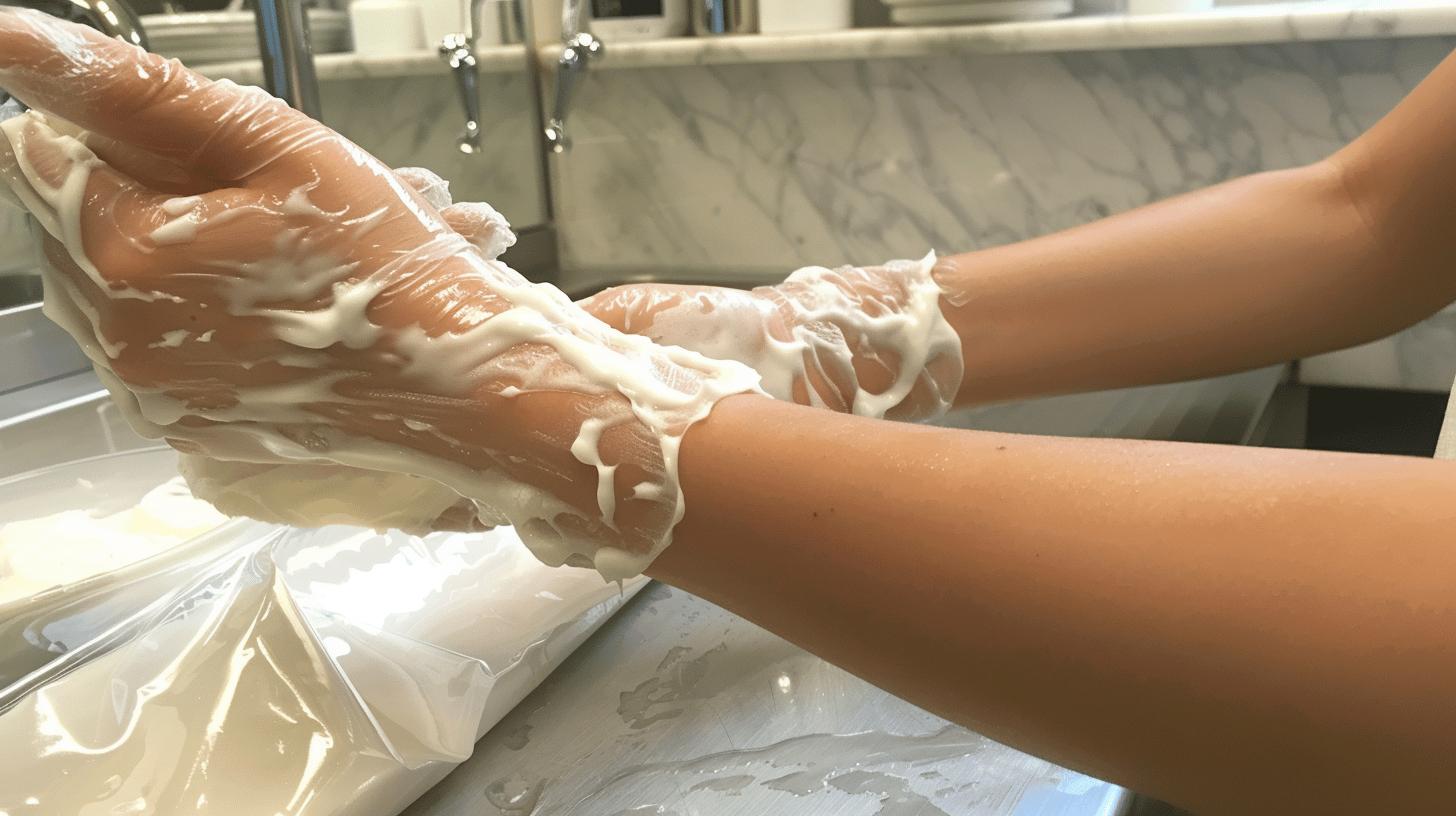
Correctly applying numbing cream for tattoos is key to getting the full numbing effect without irritating your skin or affecting the tattoo process. A rushed or careless application can reduce the effect of the cream or even make your tattoo more uncomfortable once the numbness wears off.
Here’s how to use numbing cream for tattoos in a safe and effective way:
- Do a patch test 24 hours before your appointment
Apply a small amount of the numbing cream to your inner arm and wait. This checks for allergic reactions or skin sensitivity, especially if you’ve never used lidocaine before. - Wash and exfoliate the area that will be tattooed
Clean skin helps the cream absorb into the skin properly. Use warm water and a gentle exfoliant to remove dirt or dead skin. - Dry the area thoroughly
Moisture can dilute the cream and stop it from working properly. Pat the skin dry with a clean towel. - Apply a thick layer of cream
Don’t rub it in. The cream needs to sit on top of the skin to allow the active ingredients to absorb. Apply the cream directly to the skin in a thick layer over the full area that will be tattooed. - Cover the area with cling film
This helps activate the cream and stops it from drying out. It also improves the absorption rate by keeping the cream warm. - Leave the cream on for at least 1 hour
Full numbing kicks in around 60 to 90 minutes after application. Leave yourself enough time before your tattoo appointment. - Remove the cling film and wipe off the excess cream
Use gloves or ask your tattoo artist to do this before the tattooing starts. The skin should feel numb to the touch but not overly greasy.
Common mistakes include rubbing the cream into the skin, applying too thin a layer, or removing it too early. These steps reduce the amount of lidocaine that can absorb into the skin and may result in the numbing effect wearing off mid-session. To make your tattoo as painless as possible, follow the instructions on the packaging and ask your tattoo artist if they have any preferred products or methods. Some artists prefer emla numbing cream, while others recommend a specific tattoo numbing cream that works best with their tattooing style.
Best Tattoo Numbing Creams to Use in the UK
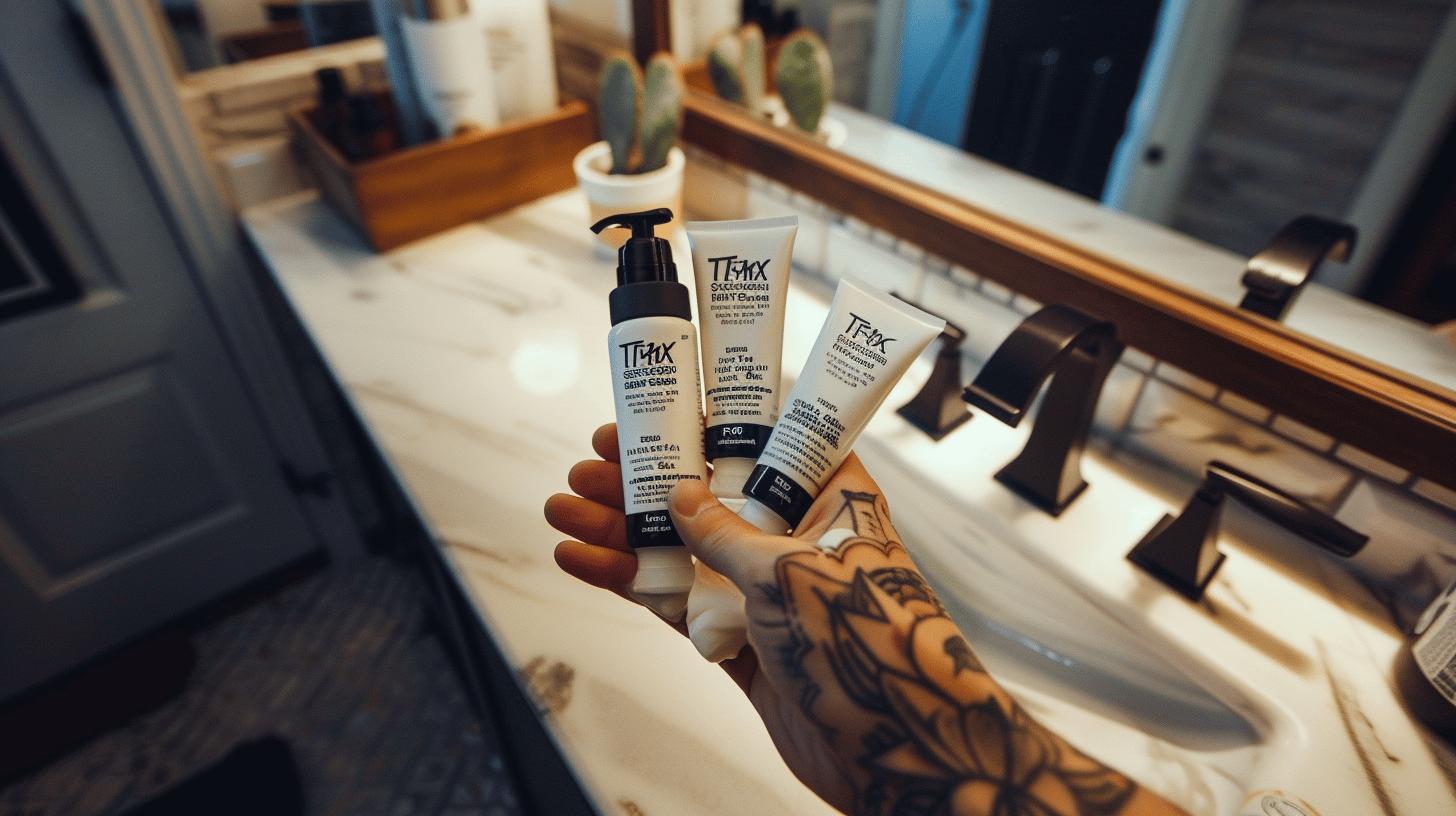
The best tattoo numbing creams UK artists and clients trust can make a big difference to your tattoo experience. Choosing the right cream affects how long the numbing effect lasts, how your skin reacts, and whether it interferes with the tattoo process. Some numbing creams for tattoos are stronger or longer-lasting than others, and many now include extra ingredients to soothe sensitive skin.
Here are five top-rated options available in the UK:
- Signature Tattoo Numbing Cream
One of the most popular options in the UK. It contains lidocaine and provides a solid 2–3 hours of numbness. Easy to apply and absorbs well when used under plastic wrap. - Signature+ Numbing Cream
A stronger version of the original, this one boasts up to 3 hours of strong numbness. Often used for large tattoos or more painful areas like ribs and feet. - Hush Tattoo Numbing Cream
American-made and available online in the UK. It contains skin-soothing ingredients like aloe and green tea extract and is designed to be used during the tattoo session as well as before. - TKTX Numbing Cream (Black, Yellow, Green)
Known for its strength, TKTX offers various versions depending on how long you want the numbing cream to last. Each colour signifies a different strength level. Always check reviews and buy from trusted sellers to avoid counterfeits. - Emla Numbing Cream
Originally designed for minor medical procedures, emla cream contains lidocaine and prilocaine. It’s available from most UK pharmacies and works best when left on for at least 1 hour before your tattoo appointment.Product Active Ingredient Duration Strength Price Range Signature Lidocaine 2–3 hours Medium £20–£30 Signature+ Lidocaine Up to 3 hours High £25–£35 Hush Lidocaine + Soothing Agents 2–4 hours Medium £30–£40 TKTX (Green/Yellow/Black) Lidocaine + Prilocaine 3–5 hours Varies by version £10–£25 Emla Lidocaine + Prilocaine 1–2 hours Low–Medium £5–£10
How Long Does Numbing Cream Last for Tattoos?

How long does numbing cream last for tattoos?
Most numbing cream for tattoos lasts between 2 to 3 hours once the numbing effect has fully kicked in. Some stronger creams claim to last up to 5 hours, but the actual duration depends on several factors including the brand, how well the cream is applied, and how your skin reacts to it. The numbness starts to wear off gradually, rather than stopping suddenly, and the peak effect usually comes around 90 minutes after you apply the cream.
When numbing cream is applied directly to the skin in a thick layer and sealed under plastic wrap, it absorbs more effectively and gives you the longest-lasting effect. If you’re getting tattooed in a sensitive spot or for a longer tattoo session, using a high-quality tattoo numbing cream with lidocaine can make the tattoo process much more manageable. Some artists may allow you to reapply cream mid-session, but this involves stopping the session, cleaning the area, and rewrapping it to reactivate the cream—which isn’t always practical.
If you feel the numbing effect starting to fade during your session, speak to your tattoo artist. They might offer a topical spray for quick relief or suggest a short break to reapply. Planning your tattoo appointment with enough time to apply a thick layer of numbing cream before getting started is your best bet for a more pain-free tattoo.
Factors that affect how long numbing cream lasts for tattoos:
- Skin type – Oily or thicker skin may absorb the cream differently, reducing effectiveness.
- Application method – A thin layer or skipping plastic wrap lowers absorption.
- Tattoo location – Areas with more movement or less fat may lose numbness faster.
- Tattoo duration – Long sessions can outlast the cream’s effect, especially if not reapplied.
Does Numbing Cream Affect Tattoo Quality?
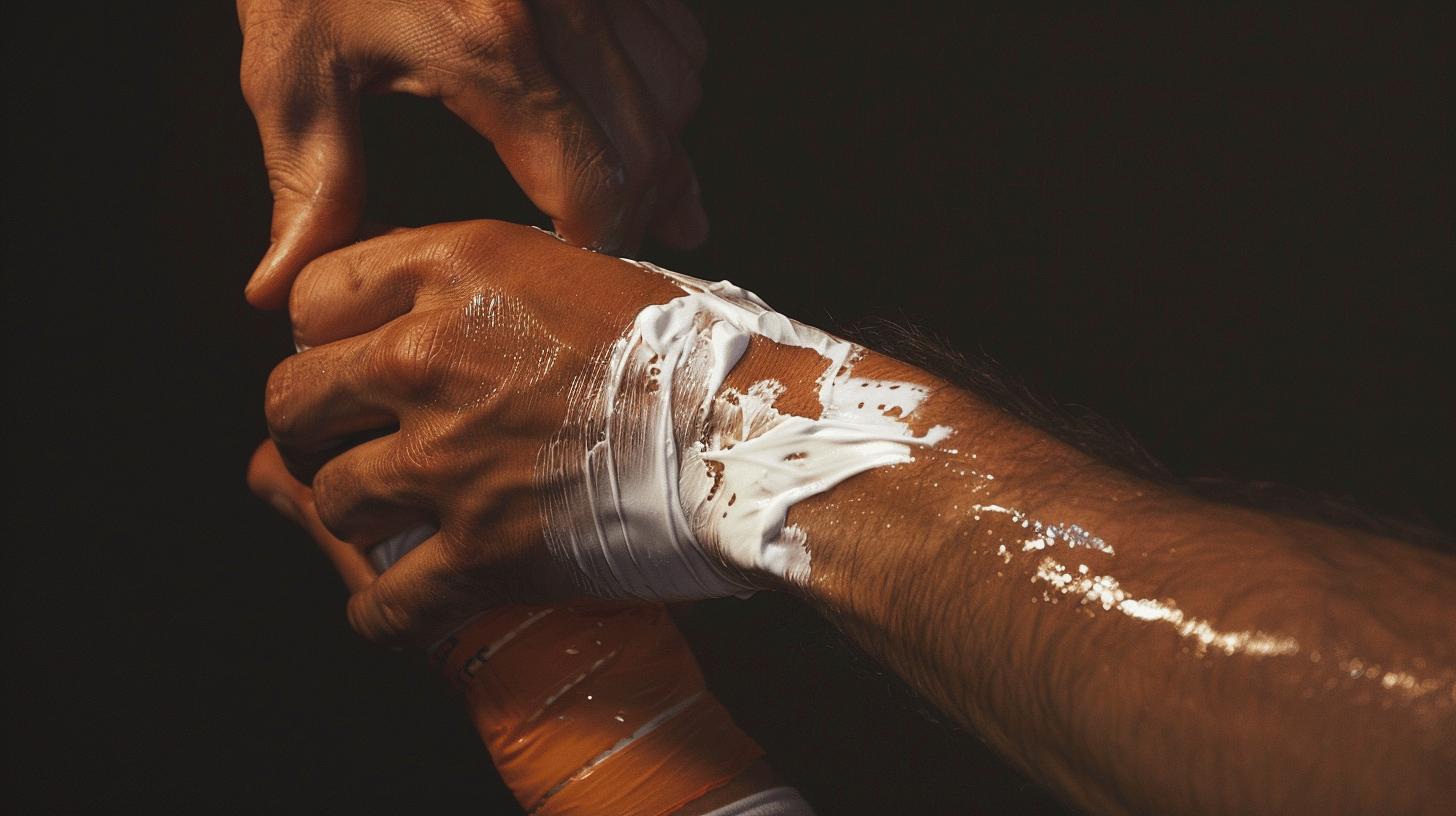
Can numbing cream affect tattoo quality?
Yes, numbing cream may affect tattoo quality if it’s overused or applied incorrectly.
Some tattoo artists believe that when numbing cream is applied in excessive amounts or left on too long, it can interfere with how the skin reacts during the tattoo process. In particular, the cream can temporarily alter the skin’s texture—making it too soft, too dry, or slightly swollen. This can lead to issues with how well the stencil sticks to the skin and how the ink settles during the tattoo session.
Here are some potential effects and their implications for the tattoo process:
| Potential Effect | Description |
|---|---|
| Stencil Adhesion Issues | Stencil may blur or not hold properly due to moisture or residue from excess cream. |
| Skin Texture Changes | Skin may feel rubbery or swollen, making it harder for the needle to deposit ink evenly. |
| Ink Saturation Problems | Some artists report the ink doesn’t absorb as well in skin that’s been numbed improperly. |
| Redness or Irritation | Incorrect use can cause skin reactions that interfere with the tattooing process. |
Using tattoo numbing cream safely means following the instructions carefully—apply a thick layer of cream directly to the area, cover it with plastic wrap, and remove the excess cream before your tattoo appointment. When used correctly, most artists agree that these creams reduce the pain without affecting the outcome. If you’re getting a tattoo and want to numb your skin, always ask your tattoo artist first to confirm which products and methods they’re comfortable working with.
Pros and Cons of Using Numbing Cream Before a Tattoo
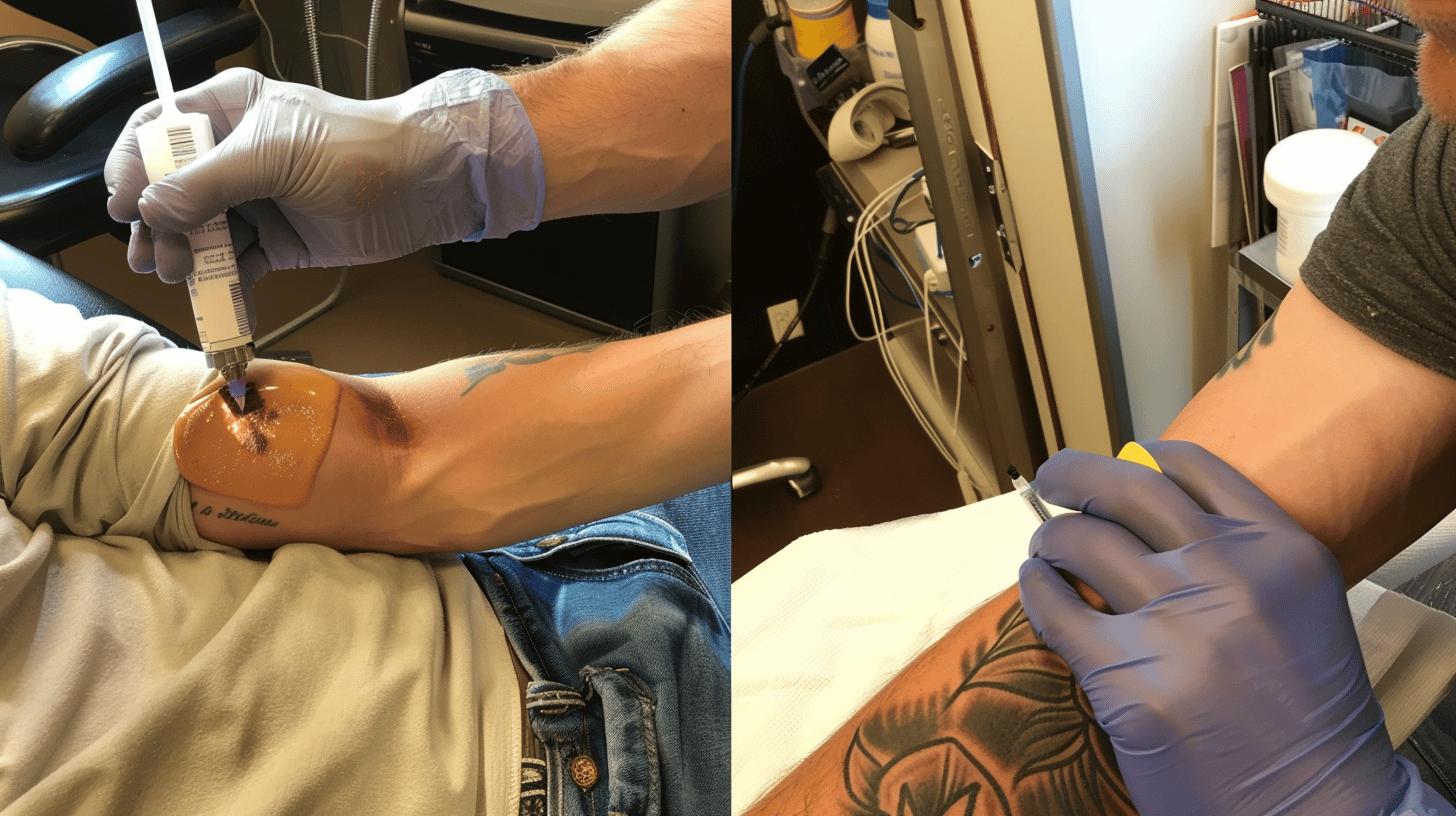
Can you use numbing cream before getting a tattoo safely?
Yes, when used properly, tattoo numbing cream is considered safe and effective. It contains topical numbing agents like lidocaine, a local anesthetic that blocks nerve signals from the area where the cream is applied directly to the skin. This helps reduce the pain during a tattoo session and can make the tattoo experience more comfortable—especially for those with sensitive skin or lower pain tolerance.
Still, using numbing cream for tattoos comes with both advantages and drawbacks, depending on how it’s applied and how your body responds.
Pros
- Reduces the pain during the tattoo process, especially in sensitive areas or during longer sessions.
- Improves comfort level comparison with and without cream, allowing clients to sit for longer without needing breaks.
- Helps reduce anxiety for first-timers or those nervous about the needle.
- Supports longer tattoo sessions, especially when a thick layer of cream is applied and kept under plastic wrap for full numbing.
Cons
- Numbing effect wears off mid-session, which can make the process more painful once numbness starts to wear.
- May cause skin reactions, particularly if the cream is left on too long or not patch-tested beforehand.
- Some tattoo artists may be reluctant, as numbing cream can affect skin texture and ink saturation.
- Overuse or incorrect application—such as rubbing it in too thin—reduces the amount absorbed and may lead to inconsistent results.
Choosing to use tattoo numbing cream should be based on your planned session length and personal pain threshold. If you’re getting a tattoo in a sensitive area or know you’ll struggle with the pain, applying numbing cream before getting started can help. Just make sure to ask your tattoo artist first and leave yourself enough time to apply the cream correctly for maximum numbing.
Tattoo Artists’ Opinions on Using Numbing Cream
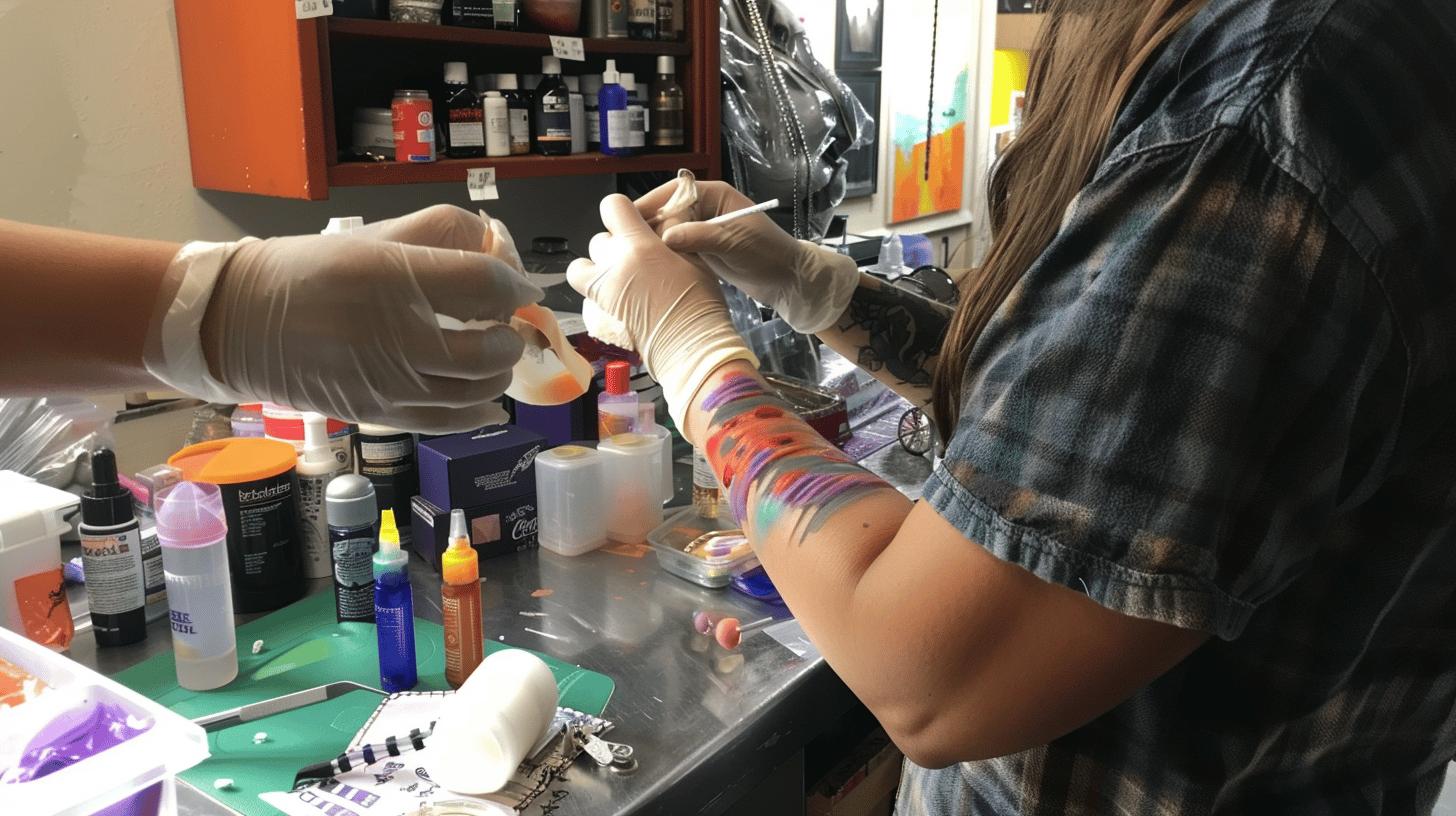
Do artists allow numbing cream?
Yes, some tattoo artists support the use of numbing cream, particularly for clients who are anxious or getting tattooed in sensitive areas. These artists see it as a tool to help clients manage pain and sit more calmly during the tattoo process. For short sessions or first-time clients, using tattoo numbing cream can make the experience far more approachable.
One artist shared on Reddit, “If it helps a client sit still and get through their first tattoo, I’m all for it—as long as they apply the cream correctly.” Another commented, “I recommend a good lidocaine-based cream for ribs or inner arms. It can make a huge difference.” A third said, “I don’t mind it if it doesn’t mess with the stencil or the skin texture.”
Do artists recommend numbing cream?
Not always. Many artists are sceptical of how numbing cream may affect the skin. Some believe it can change how the skin absorbs ink or cause issues with how the stencil holds. Others see it as unnecessary, especially for seasoned clients or shorter tattoos.
One experienced artist posted, “I’ve had clients come in with skin that felt rubbery or looked too pale—makes it harder to do clean lines.” Another added, “It’s not about being tough, but I prefer when the skin feels natural.” Some artists may be reluctant, so it’s always best to ask your tattoo artist before applying any cream.
Where to Buy Tattoo Numbing Cream in the UK
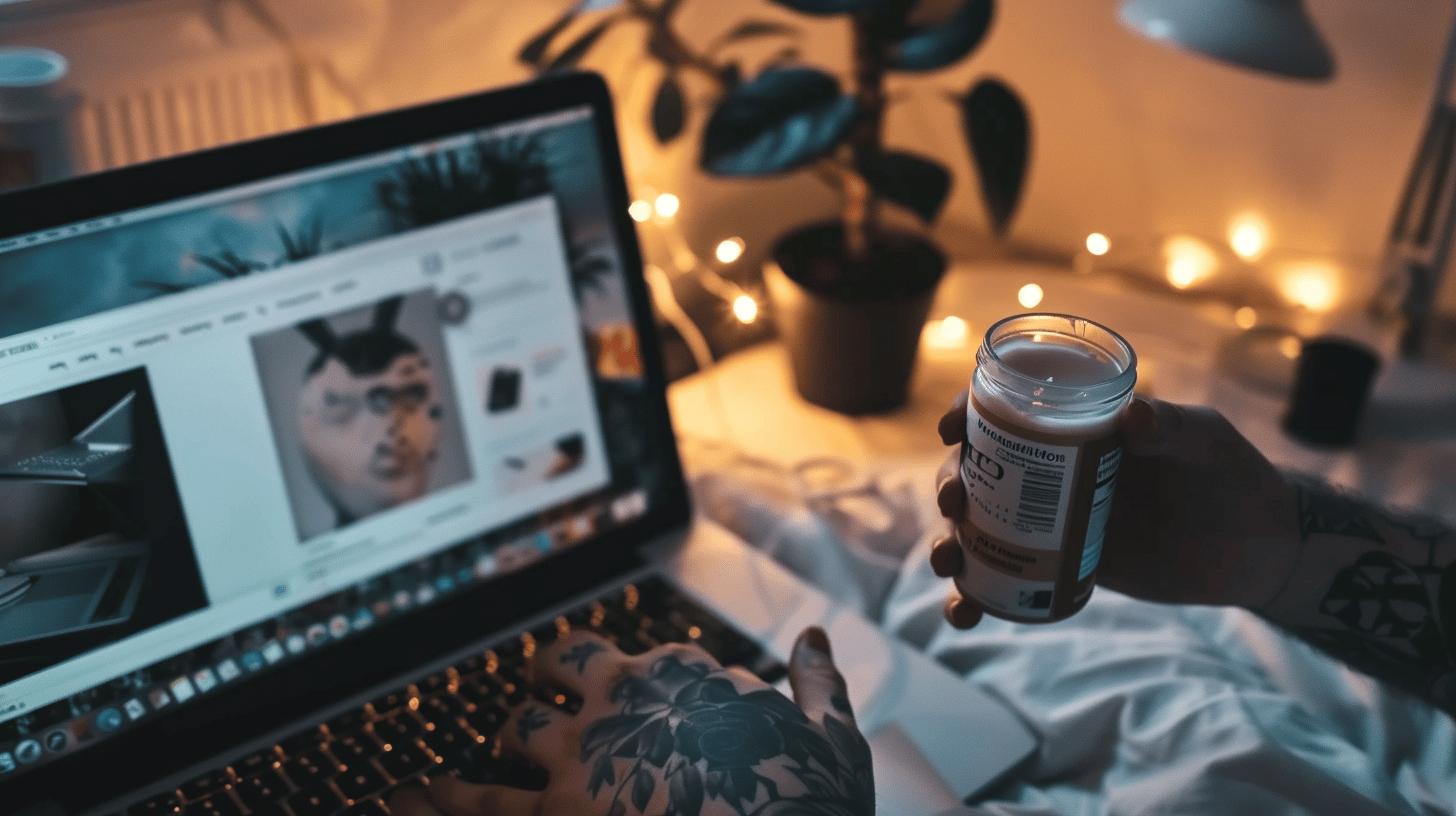
Tattoo numbing creams are widely available across the UK, both online and in high street stores. Whether you’re looking for emla cream for a small tattoo or a stronger lidocaine-based cream for a longer tattoo session, there are trusted options out there. If you’re planning to use numbing cream before getting a tattoo, always check that the product is intended for skin numbing and includes ingredients suitable for tattoo use.
Here are five reliable places where to buy tattoo numbing creams in the UK:
- Amazon (UK)
A popular place to find a range of tattoo numbing cream options including TKTX and Signature+. Make sure to buy from sellers with strong reviews to avoid counterfeit creams. - Boots
Boots numbing cream for tattoos typically includes emla cream, which is designed for minor skin procedures. It’s available over the counter and contains lidocaine and prilocaine. - Superdrug
Superdrug numbing cream for tattoos may be limited but often includes topical numbing agents suitable for small tattoos or cosmetic use. - eBay UK
You can find TKTX numbing cream on eBay, but caution is needed. Look for verified sellers and check product reviews before buying. - Official Brand Websites
Buying TKTX online UK directly from the brand site helps reduce the risk of fakes. The same applies to Signature and Hush products.
When buying a numbing cream for tattoos, always check the active ingredients—lidocaine should be clearly listed. Avoid products without proper labelling or with inconsistent packaging. Counterfeit creams often have incorrect dosages or ingredients that can irritate the skin or interfere with the tattoo process. Always read the instructions before you apply the cream, and leave yourself enough time before your tattoo appointment.
Common Side Effects and Risks of Numbing Creams for Tattoos

What are the side effects of numbing cream?
The most common side effects of numbing cream include skin irritation, redness, swelling, itching, and dryness. These reactions usually happen when the cream is applied for too long or too frequently, or if the skin reacts to one of the numbing agents such as lidocaine.
Can you have an allergic reaction to numbing cream?
Yes. An allergic reaction to numbing cream can happen, especially in people with sensitive skin. Symptoms may include hives, rash, intense itching, or even difficulty breathing in rare cases. Always test the product on a small patch of skin at least a day before your tattoo appointment.
Here are five possible risks of numbing cream before tattoo sessions:
- Redness and swelling – Local irritation where the cream is applied can make the area inflamed.
- Dry or flaky skin – Some numbing creams for tattoos dry out the skin, which can interfere with the tattoo process.
- Allergic reactions – Ingredients like lidocaine may trigger unexpected skin responses.
- Delayed healing – Overuse or incorrect application may slow down how your new tattoo heals.
- Systemic absorption – Using too much cream or applying it to broken skin can cause it to enter the bloodstream, affecting your heart or nervous system.
You should contact a healthcare professional if the numbing effect feels too strong or if you experience dizziness, breathing trouble, or prolonged numbness beyond the tattoo session. Always follow the instructions when you apply the cream, and ask your tattoo artist for product recommendations if you’re unsure. Doing a spot test the day before can reduce your chances of a bad reaction and help make your tattoo experience as safe as possible.
Tips for Using Numbing Cream on Large Tattoos or Long Sessions
Applying numbing cream on large tattoos or during long sessions can help reduce the pain, but managing the numbing effect properly is critical. The cream may start to wear off partway through, especially during sessions lasting several hours. Reapplying numbing cream during tattoo sessions isn’t always simple—it may require cleaning the area, stopping the tattooing, and re-covering with plastic wrap to reactivate the cream.
Here are 5 strategies for using tattoo numbing cream effectively over extended tattoo sessions:
- Break large tattoos into smaller segments
If you’re getting a full sleeve or other large piece, split the tattoo into smaller sections. This allows you to apply a thick layer of cream only to the area being worked on, giving full numbing for each part without the effect wearing off too soon. - Time the application carefully
Apply the cream at least 1 hour before your tattoo appointment. The numbing cream needs time to absorb into the skin and reach full effect—usually 60 to 90 minutes. - Use plastic wrap to seal the area
After applying a thick layer of cream directly to the skin, cover the area with cling film. This helps activate the cream, keeps it warm, and prevents it from drying out before your tattoo artist starts. - Consider using sprays for touch-ups
For longer sessions, some artists may use a topical numbing spray partway through. These sprays work quickly and can help reduce the pain without needing to stop and reapply cream. - Avoid applying cream to the entire area at once
Only apply the cream to the area that will be tattooed in the first few hours. If you apply it to the full area too early, the numbing might wear off before your artist reaches that part of the skin.
Before your tattoo appointment, ask your tattoo artist how they prefer to work with numbing cream. Some artists like using lidocaine-based products like emla cream, while others may be reluctant if it affects the skin texture or ink saturation. Good communication helps make your tattoo experience as pain-free as possible.
Final Words
Choosing whether to use numbing cream before getting a tattoo comes down to comfort, preparation, and communication. We covered how tattoo numbing cream works, how long the numbing effect lasts, and how to apply numbing cream for tattoos safely.
We looked at whether numbing cream can affect your tattoo’s quality and which products work best in the UK market. We also discussed artist opinions, possible side effects, and how to manage pain during large tattoos or long sessions.
If you’re thinking about using numbing cream before a tattoo, it’s smart to talk to your tattoo artist upfront. Proper application and trusted brands go a long way in helping numb your skin without sacrificing the ink.
Done right, tattoo numbing cream can help you sit longer, relax more, and enjoy getting tattooed—especially for your next tattoo.
FAQ
Q: Can you use numbing cream before getting a tattoo?
Yes, you can use numbing cream before getting a tattoo. When applied properly, tattoo numbing cream helps numb the area and reduce pain during a tattoo session, especially in sensitive zones.
Q: Why do some tattoo artists not like using numbing cream?
Some tattoo artists may avoid numbing cream as it can affect the skin texture, interfere with ink absorption, or cause stencil issues if used incorrectly. Always ask your tattoo artist before applying.
Q: Does numbing cream for tattoos affect the quality of the ink?
Tattoo numbing cream may interfere with ink saturation or stencil clarity if overused. For the best tattoo outcome, apply a thick layer correctly and avoid excess cream before your tattoo appointment.
Q: How long before getting a tattoo should you apply numbing cream?
Apply the cream at least 60 to 90 minutes before getting a tattoo. It needs enough time to absorb into the skin and activate the numbing effect for maximum numbing.
Q: How long does the numbing effect from tattoo numbing cream usually last?
The numbing effect lasts around 2 to 3 hours. For long tattoo sessions, numbness starts to wear off, so some artists recommend breaks to reapply or divide the area into smaller sections.
Q: Can you numb your skin at home before a tattoo without numbing cream?
Basic methods like ice or distraction techniques can dull pain slightly, but they don’t provide the full numbing that topical anaesthetics or tattoo numbing cream offer. Creams are more effective and consistent.
Q: What are the side effects of using numbing cream before getting a tattoo?
Common side effects include redness, swelling, or allergic reactions. Rarely, excessive use may lead to systemic absorption. Always do a sensitivity check on your skin before your tattoo session.
Q: Is Emla numbing cream safe and effective for tattoos?
Emla cream is a lidocaine-based local anaesthetic. It can numb your skin effectively when applied directly to the skin, making your tattoo less painful, but results vary by skin type and proper use.
Q: Do you still feel the tattoo needle when using numbing cream?
You may feel pressure but most of the pain reduces. Tattoo numbing cream works by blocking local nerve signals, dulling the sensation from the needle and making the tattoo experience more comfortable.
Q: Can you use any numbing cream for tattoos, or does it have to be specific?
Only use tattoo numbing creams formulated for skin numbing during the tattoo process. Products like lidocaine-based creams are designed to absorb into the skin and provide safe, localised relief.
Q: What’s the strongest numbing cream for tattoos available in the UK?
Signature+ and TKTX are considered the strongest in the UK. They use high-strength lidocaine and can last up to 3 hours. Always apply the cream as instructed and buy from a trusted tattoo shop or seller.
Q: Why might the numbing cream stop working during the tattoo?
The numbing effect can fade over time because the cream is absorbed and metabolised. For long sessions, numbness wears off, so artists may reapply or use sprays mid-session depending on your skin and tattoo location.



